
|
|
|
|
|
The Year 2000
The year 2000 began in Brussels and a visit to two editions of the TLP at Florennes. After this relatively simple start of the year a small airshow followed at Gilze-Rijen in May which was organized by the Technical University of Delft. The Faculty of Aerospace Engineering celebrated its 55th anniversary. Special was the airshow on the beach of 's Gravenzande where the Royal Netherlands Navy organized an airshow. In France the necessary visits were made to airfields such as Tours, Compiegne, St Dizier and Dijon. The RIAT was this year not held at RAF Fairford but at RAF Cottesmore. The year 2000 was ended with an excellent visit to the no 299 Squadron.
|
|
|
|
|
|
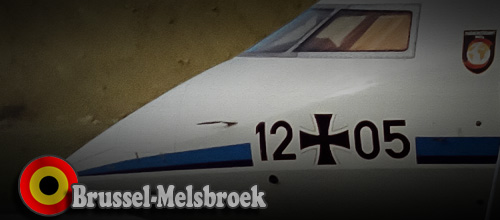
|
|
Government Aircraft at Zaventem
The Euro Top in Brussels; Brussel-Melsbroek, February 28, 2000
The first visit of the year 2000was made to Brussels. There was again a government Euro Top. During these kinds of meetings often several government aircraft will fly to Brussels. Brussels is the home town of the European political office. For this reason, regularly government planes from all over the world will land at Brussels. During this visit there were some governments aircraft present on the platform at Abelag. These aircraft came from Germany, Monaco and Portugal. Furthermore, the reason for this visit was the Moroccan Gulfstream.
|
|
|
|
|
The Development of the TLP
The Tactical Leadership Program, part 1; Florennes, March 7, 2000
Nowadays the TLP is one of the most important leadership courses in Europe. Ten NATO countries are currently involved in the TLP program at Florennes in Belgium. The purpose of the TLP is to allow the countries to operate in a large multinational cooperation with many aircraft with the emphasis on leadership. The history of the TLP goes back to the highlight days of the Cold War period. The Tactical Leadership Program of the Allied Air Forces Central Europe (AAFCE) was born out of a desire of the cooperating forces to act as one force.
|
|
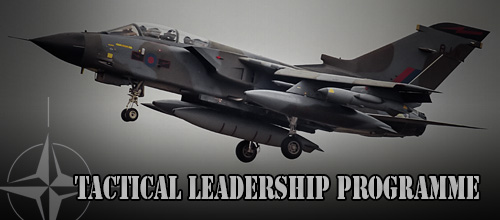
|
|
|
|
|
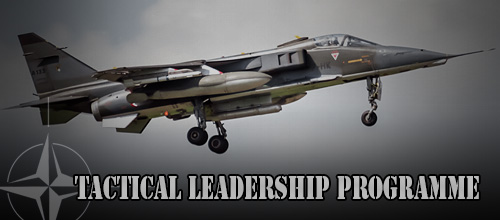
|
|
The Composition of the TLP Coarse
The Tactical Leadership Program, part 2; Florennes, March 7, 2000
The TLP is now one of the most important standardization and leadership courses in Europe. The way the course is structured ensures that the participants of the TLP learn all aspects of modern tactical flying and leadership. The course consists of a theoretical part and a practical part and will take normally four weeks. The TLP course is not just about the flying part only. A long period before the pilots start this phase, the pilots also undergo the academic course. One will therefore first learn the theory before practicing training missions.
|
|
|
|
|
VSV “Leonardo da Vinci” Delft
Celebrating the 55th Anniversary; Gilze-Rijen, May 11, 2000
The Aeronautical Study Association "Leonardo da Vinci" (abbreviated as VSV "Leonardo da Vinci") is the association of the Aerospace Engineering students of the Delft University of Technology and was founded in 1945. To honor its 55th anniversary, the association organized a small size airshow at Gilze-Rijen Air Base. As an association, the VSV ensures that students have a voice in the educational program and they also realize quality assurance through educational committees. The VSV also provides books for students.
|
|
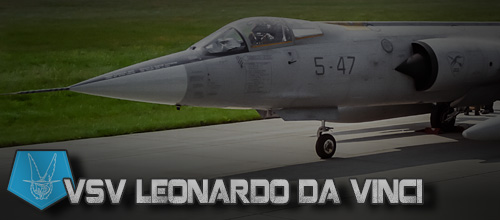
|
|
|
|
|
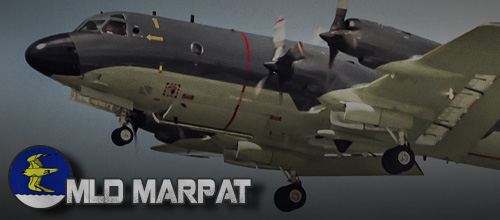
|
|
The P-3C Orion in Dutch Service
The Orion’s of MARPAT, part 1; MVK Valkenburg, May 27, 2000
The Lockheed P-3C Orion is the major patrol aircraft in use at the Royal Netherlands Navy (Koninklijke Marine). The aircraft are all stationed at the Naval Air Station Valkenburg near Katwijk aan Zee. The aircraft have been in use by the Royal Netherlands Navy since 1983 and are used to patrol the North Sea coastline. The Lockheed P-3C Orion is the last model in a series of patrol aircraft of the American aircraft factory Lockheed-Martin. The P-3C entered service with the Royal Netherlands Navy at the Vanal Air Service in the 1980s.
|
|
|
|
|
MVK Valkenburg and its Orion Units
The Orion’s of MARPAT, part 2; MVK Valkenburg, May 27, 2000
Naval Air Base Valkenburg is home to the Dutch Orion fleet of the Marine Luchtvaartdienst (Naval Air Service). The airfield is located in the west of the country near Katwijk aan Zee and Leiden. Nowadays two Orion squadrons are stationed here. These two historic squadrons are, the 320 and the 321 Squadron. The history of MVK Valkenburg goes back to the year 1939. On April 17, 1939, the construction of the military airfield Valkenburg started. On October 15, 1947, the airfield was transferred from the Air Force to the Naval Air Service.
|
|
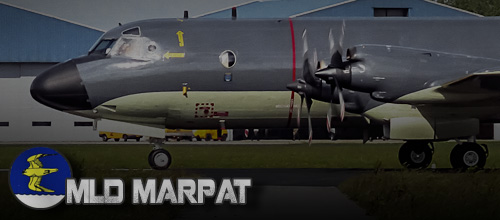
|
|
|
|
|
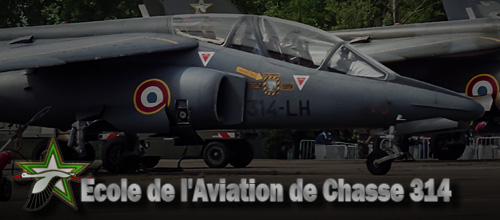
|
|
Ecole de l'Aviation de Chasse 314
Training with the Alpha-Jet; Tours Val-de-Loire, May 28, 2000
The French air base Tours Val-de-Loire is nowadays home to the Ecole de l'Aviation de Chasse 314 (EAC 314). This unit is equipped with the French Dassault Alpha-Jet which is used for the training of new pilots. Besides Tours, the other half of the Alpha-Jets are based at Cazaux for the tactical part of the pilot training. The French variant of the Alpha-Jet was the Alpha-Jet E where the letter E stands for Ecole which means school in French. The Alpha-Jet E entered service in France in May 1979 to replace the T-33 and the Mystère IVA.
|
|
|
|
|
6 Régiment d'Hélicoptères de Combat
The Italian Regiment of the ALAT; Compiègne, May 28, 2000
The 6 Régiment d'Hélicoptères de Combat (6 RHC) is a unit of French l'Aviation Légère de l'Armée de Terre (ALAT) and is stationed on the General Stephen base in Margny-lès-Compiègne in the French Oise. The regiment is nowadays a modern helicopter regiment and flies with different types of Gazelles and Pumas. The 6 RHC was established in its current form on August 1, 1977. The unit is stationed at the helicopter base Compiègne located 50 km north of Paris. The current 6 RHC consists of 6 escadrilles which are equipped with helicopters.
|
|
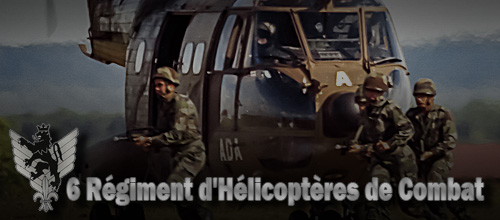
|
|
|
|
|
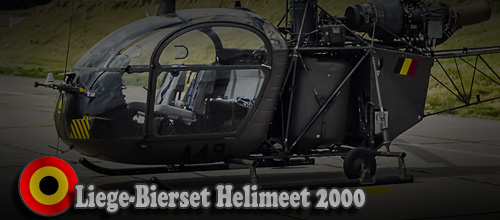
|
|
The Agusta A109BA Hirundo
The Belgian Army Heli Days 2000; Liege-Bierset, June 2, 2000
The most important helicopter in the Belgian arsenal of the army air fleet is the Agusta A109 Hirundo. In total, the Belgian Army has 46 of these helicopters in the anti-tank role and in the reconnaissance role. The helicopters are stationed at Bierset Air Base, south of the city of Liège in Wallonia in northeastern Belgium. The main helicopter in Belgian service is of the type A109BA. This version of the A109 is an A109A version which has been specially developed for the Belgian Army. The letter "B" is the designation A109BA stands for Belgium.
|
|
|
|
|
The Last Operational Jaguars in France
La 7ème Escadron de Chasse, part 1; Saint-Dizier, June 18, 2000
Currently, Saint-Dizier is the only home base left of the French SEPECAT Jaguar fleet. The Jaguar is currently one of the most important ground attack fighters of the French Air Force. The Jaguar is at the end of its life time and will be replaced in the coming years by the modern Dassault Rafale at Saint-Dizier Air Base. The SEPECAT Jaguar is a fighter-bomber which was developed at the beginning of the 1960s by a French-English partnership. The SEPECAT Jaguar was developed by Breguet and the British Aerospace Corporation.
|
|
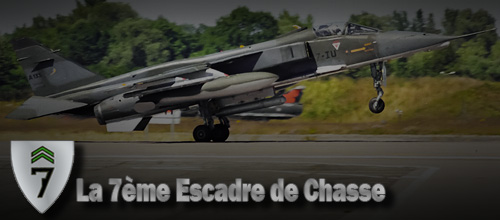
|
|
|
|
|
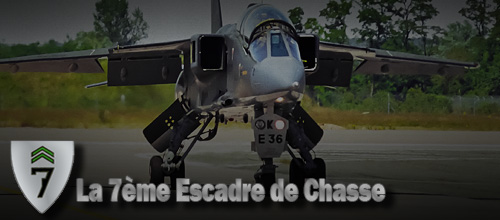
|
|
The Historical Escadrilles of EC 7
La 7ème Escadron de Chasse, part 2; Saint-Dizier, June 18, 2000
Escadron de Chasse 7 is now the last operational unit in France which still operates with the SEPECAT Jaguar. EC 7 is composed of three Escadrons which are in their turn built up from a number of escadrilles. These escadrilles all carry the history and traditions of the French fighters from the period of the First World War. The Escadron de Chasse 7 was founded in Dijon on October 1, 1932. The escadrons of EC 7 lost their nuclear tasks at the beginning of the 1990s. The units would specialize further in the conventional attack and strike.
|
|
|
|
|
Unfortunately no German Phantoms
F-16s of the no 313 and the no 315 Squadron; Twenthe, June 22, 2000
Twenthe Air Base is next Leeuwarden and Volkel one of three Dutch F-16 airfields. Twenthe is the home base of the no 313 Squadron and the no 315 Squadron. Special was that many German Phantoms from Rheine-Hopsten would fly from Twenthe in this period. The runway at Hopsten is currently undergoing renovations. During this flying day unfortunately not many planes would fly. The F-4F Phantoms from Hopsten were not active for an unknown reason. Eventually, only three F-16s were flying; one of them was a visitor from Leeuwarden.
|
|
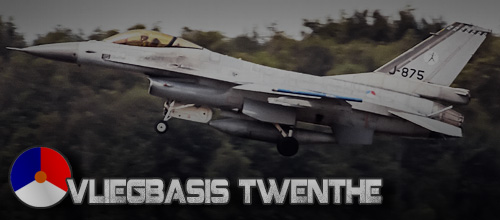
|
|
|
|
|
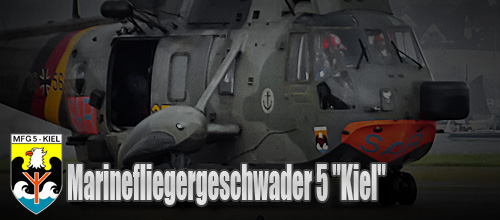
|
|
Marinefliegergeschwader 5 “Kiel”
The Helicopters of the German Navy; Kiel-Holtenau, June 24, 2000
Nowadays Marinefliegergeschwader 5 (MFG-5) is based at the North German Naval Base Kiel-Holtenau. The unit houses two operational helicopter types which are equipped with the Sea Lynx Mk88 and the Sea-King Mk41. The unit has the Search And Rescue task along the German coastline and aboard the ships. The airport of Kiel-Holtenau is located at the end of the Kiel Canal on the Kiel Fjord near the Baltic Sea and is known for its large locks for ocean-going vessels and the location of Kiel Airport. All German Naval helicopters are based here.
|
|
|
|
|
The French-German C-160 Transall
The C-160 Transall, part 1; Wunstorf, June 24, 2000
The C-160D Transall is the most important strategic transport aircraft of the German Luftwaffe. The C-160 Transall is a military transport aircraft that was produced as a joint venture between factories from France and Germany. The name C-160 "Transall" is an abbreviation of the consortium "Transporter Allianz". At the time this consortium consisted of companies, such as; MBB, Aerospatiale and VFW-Fokker. The aircraft was originally developed to meet the requirements for a modern transport aircraft for the French and German air forces.
|
|
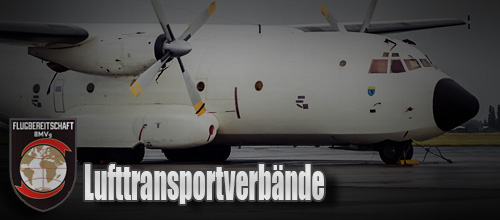
|
|
|
|
|
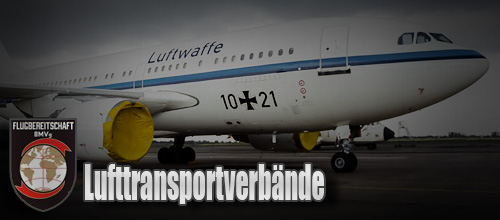
|
|
The German Transall Units
The C-160 Transall, part 2; Wunstorf, June 24, 2000
The C-160D Transall nowadays forms the backbone of the German transport capacity. The Luftwaffe operates from three large airfields with this type. Germany has three large units flying the C-160D Transall, these units, are; LTG-61 at Landsberg, LTG-62 at Wunstorf and LTG-63 at Hohn. The German transport units all fly with about thirty Transalls. In addition to the three operational units, WTD-61 is also active with the Transall to test the aircraft. The Transall is the only long-range strategic transport aircraft in use at the current Luftwaffe.
|
|
|
|
|
Open House Geilenkirchen
The NATO E-3 Sentry Fleet; Geilenkirchen, June 26, 2000
During the weekend of June 25 and June 26, 2000, a static show took place on the NATO airbase Geilenkirchen. There were several aircraft present from different European countries. Geilenkirchen Air Base is home to the E-3 Sentry fleet of the NATO countries. In addition to the Sentry radar aircraft, there are also two Boeing CT-49s stationed at this airbase. This aircraft is a military version of the Boeing 707. During the small static at this airbase were aircraft such as a Spanish CN-235, a Dutch PC-7, a Turkish F-16C and local aircraft were captured.
|
|
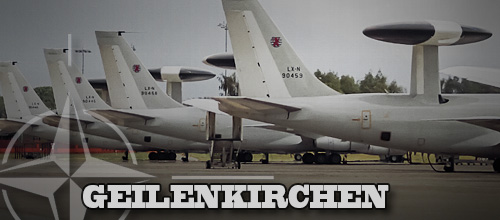
|
|
|
|
|
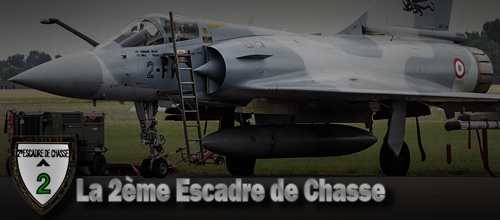
|
|
La 2ème Escadre de Chasse
Traditions of the Second Escadron; Dijon-Longvic, July 16, 2000
Nowadays, Dijon-Longvic is home to the French La 2ème Escadre de Chasse. This unit is equipped at Base-Aerienne Dijon with the Dassault Mirage 2000-5F and operates in the air defense role. As with many French units, the history of this escadron started with the formation of the SPAs during the First World War. The French airbase Dijon-Longvic (Base aérienne 102 Dijon) is an air force base of the French Air Force (Armée de l'Air). The airfield is located about 3.5 km east of the town of Longvic near Dijon in the east of France.
|
|
|
|
|
The Development of the F/A-18 Hornet
The F/A-18 Hornet, part 1; RAF Cottesmore, July 22, 2000
The American McDonnell Douglas F/A-18 Hornet is a two-engine fighter jet. The supersonic aircraft can operate under all weather conditions from the American carriers. The Hornet was one of the first all-round fighter aircraft in the world that can be used both in the air defense role and in the attack role in one mission. The F/A-18 Hornet was originally designed by McDonnell Douglas and Northrop. The F/A-18 is derived from the YF-17 project from the 1970s and is used by the United States Navy and the United States Marine Corps.
|
|
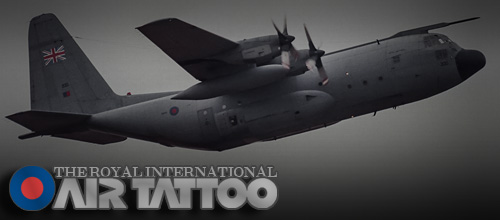
|
|
|
|
|
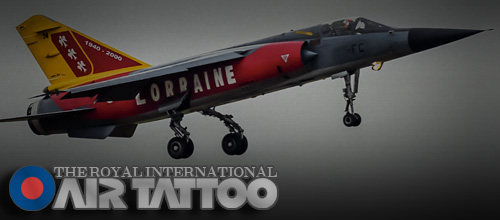
|
|
Deployments of the F/A-18 Hornet
The F/A-18 Hornet, part 2; RAF Cottesmore, July 22, 2000
The McDonnell Douglas F/A-18 Hornet would over the years become the most versatile aircraft which the United States Navy has ever had. The Hornet is suitable for use both the ground attack role and the air defense role. F/A-18 Hornets have therefore performed in both roles in various crisis areas in the world. McDonnell Douglas introduced the first F/A-18A Hornet on September 13, 1978. The aircraft had blue-white colors and was marked with "Navy" on the left and "Marines" on the right. The first flight of the Hornet was on November 18, 1978.
|
|
|
|
|
The F/A-18E/F Super Hornet
The F/A-18 Hornet, part 3; RAF Cottesmore, July 22, 2000
The Boeing F/A-18E and F/A-18F Super Hornet is a two-engine fighter jet suitable for deployment as a multi-role fighter plane. The aircraft is based on the F/A-18C/D Hornet design, but is more than 1.5 times larger than its predecessor. The Super Hornet will replace the F-14 Tomcat within the Navy. The F/A-18E Super Hornet is the single-seat version of the aircraft where the F/A-18F is the double-seat version. The Super Hornet has an internal 20 mm M61 rotary Vulcan cannon and is able to carry air-to-air missiles and air-to-ground weapons.
|
|
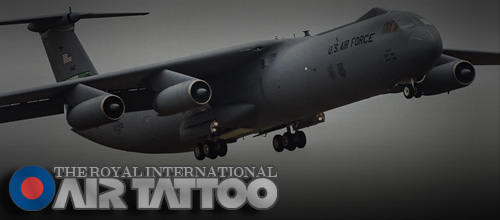
|
|
|
|
|
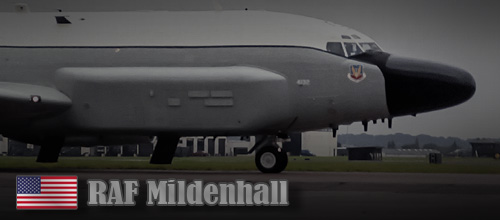
|
|
The 100th Air Refuelling Squadron
American Tankers in England; RAF Mildenhall, July 23, 2000
The American airbase RAF Mildenhall in the United Kingdom is home to the tankers of the 100th Air Refuelling Squadron. The 100 ARS currently flies the Boeing KC-135 Stratotanker. While visiting RAF Mildenhall several tankers were present at their parking spot along the fence. These aircraft could be easily captured on photo. At the end of the afternoon there was also a RC-135 which was started up. RAF Mildenhall is one of the few American airfields outside the United States where the RC-135 is stationed regularly during a detachment.
|
|
|
|
|
British Tornado’s in Germany
The Last British Airbase in Germany; RAF Brüggen, August 8, 2000
RAF Brüggen is one of the last remaining operational British airfields in Germany. At this airbase are stationed no less than four operational squadrons based which all operate the Tornado GR1 and GR4. RAF Brüggen will be closed at the beginning of the next year. The four Tornado units will then be pulled back to the United Kingdom. The units are then distributed on RAF Marham and RAF Lossiemouth. There was during the visit at Brüggen unfortunately not much activity on the airbase. Only a few Tornado’s were flying during this day.
|
|
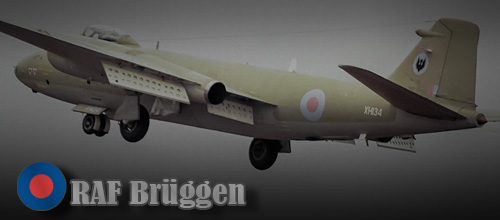
|
|
|
|
|
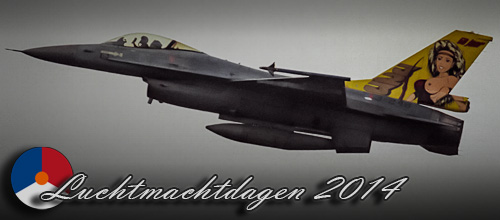
|
|
The F-16 squadron at Volkel
The Dutch F-16 Squadrons, part 1; Volkel, September 2, 2000
Volkel Air Base is nowadays the largest F-16 airbase of the Royal Netherlands Air Force. At Volkel are three operational squadrons and a test unit based. The operational squadrons, are; the 306 Photo Reconnaissance Squadron, the 311 Squadron and the 312 Squadron. The Test-Group KLu will soon leave to Leeuwarden. The Test Group F-16 (TG-KLu) is not an operational squadron in the real sense of the word. The aircraft of the TG-KLu was called "Orange Jumper" because of the orange colors which was used for the additional wiring.
|
|
|
|
|
F-16s at Twenthe and Leeuwarden
The Dutch F-16 Squadrons, part 2; Volkel, September 2, 2000
Besides Volkel Air Base, also Twenthe Air Base and Leeuwarden Air Base are the home base of two Dutch F-16 squadrons. The no 313 and no 315 Squadron are stationed at Twenthe and the no 322 and no 323 Squadron are stationed at Leeuwarden. Both Twenthe and Leeuwarden are Dutch MOB (Main Operating Base) airfields. On July 3, 1992 the no 323 Squadron was renamed to the 323 Tactical Training, Evaluation & Standardization Squadron (TACTESS). It is a unit that trains instructors and provides Integrated Combat Training.
|
|
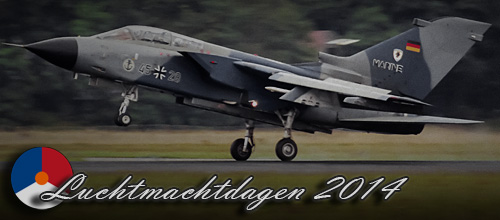
|
|
|
|
|
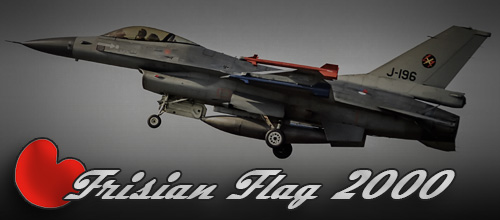
|
|
International Exercise Frisian Flag, part 1
The History of Frisian Flag; Leeuwarden, September 5, 2000
The contemporary international exercise Frisian Flag was founded at the beginning of the 90s. In this period shortly after the Cold War, much would change for the European air forces and their tasks. The doctrines and the way of operating would change drastically. Frisian Flag was created to train these major changes. The Berlin Wall fell on November 9, 1989, and in December 1991 the Soviet Union ceased to exist. With this event came an end to the Cold War and the military balance as it was at that time. Everything became different from here.
|
|
|
|
|
International Exercise Frisian Flag, part 2
The Objectives of Frisian Flag; Leeuwarden, September 5, 2000
From the beginning of the 1990s, Frisian Flag has grown from a small local exercise to train pilots to a changing world into a major international leading exercise for fighter pilots. Countries from all over Europe participate every year in the exercise to train. In their turn they give a lot of input as well to the exercise. The main objective of the exercise Frisian Flag is to train the participants in what is now the core of the expertise of a fighter pilot. At the moment the Combined Air Operations (COMAO) are the most important part of the training.
|
|
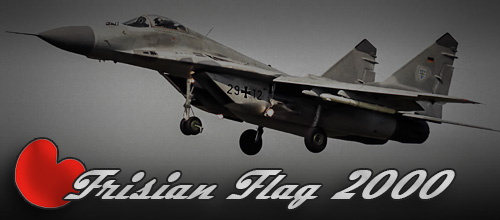
|
|
|
|
|
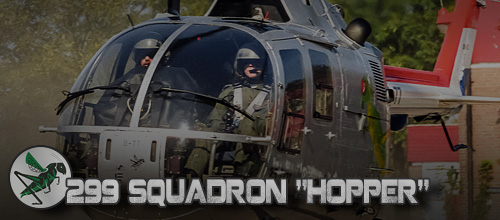
|
|
The Silver Hopper from Gilze-Rijen
Landing on the Town Hall Square; Rijen, September 21, 2000
In 2000 the nowadays familiar silver Bo-105 was introduced at the no 299 Squadron at Gilze-Rijen Air Base. The helicopter is often sent to various airshows across Europe. The Bölkow helicopters at Gilze-Rijen always fly under the callsign "Hopper". On September 21, during a county day, the silver Hopper landed in the middle of the center of Rijen in front of the town house. It was a fairly confined area where the helicopter had to land. It was a confined area where the helicopter had to land and a lot of sand was blown away during the landing.
|
|
|
|
|
Gilze-Rijen, Runway 28
Gilze-Rijen Air Base in 2000; Gilze-Rijen 2000
The year on Gilze-Rijen started with the visit of some Soesterberg Chinooks. Furthermore, mainly a lot of local traffic would be captured at Gilze-Rijen. The year 2000 would be the last year where the Royal Netherlands Air Force would use the leased AH-64A Apaches. One of the Apaches had special markings with the text "301 Goes Delta". Furthermore Gilze-Rijen was visited by a Swiss Super Puma which made a night stop at the airbase. The year at Gilze-Rijen was ended with a visit of a Dutch Fokker F-60UTA-N from Eindhoven Air Base.
|
|
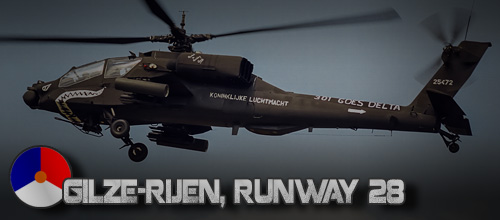
|
|
|
|
|
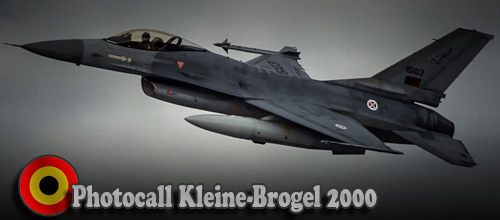
|
|
The Development of the F-14 Tomcat
The Grumman F-14 Tomcat, part 1; Kleine-Brogel, October 24, 2000
The Grumman F-14 Tomcat is an American supersonic fighter aircraft operating on board the American aircraft carriers of the United States Navy. with a variable swing wing, the Tomcat is currently the main fighter of the United States Navy. The F-14 Tomcat is currently in the end of his career within the Navy. Grumman's VFX deployment was designed around the TF30 engine, the AWG-9 radar and the AIM-54 missile. This design eventually became the Grumman F-14A Tomcat. Grumman were chosen as finalist in 1968 for the VFX program.
|
|
|
|
|
Deployments of the F-14 Tomcat
The Grumman F-14 Tomcat, part 2; Kleine-Brogel, October 24, 2000
For years the F-14 Tomcat was the major front line fighter of the United States Navy. The aircraft which initially only was developed as an air defense fighter, quickly became an all-round deployable aircraft. The F-14 Tomcat would be used mainly against fighters from Libya and in for actions Iraq and later in Yugoslavia. The F-14A Tomcat began its career within the United States Navy as the successor of the McDonnell Douglas F-4 Phantom II in September 1974. The F-14 Tomcat gained its first air victory over the Gulf of Sidra near Libya.
|
|
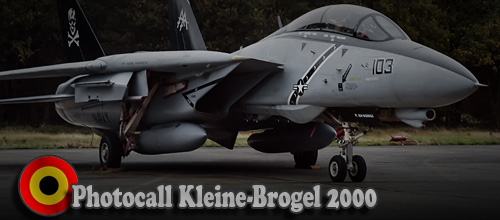
|
|
|
|
|
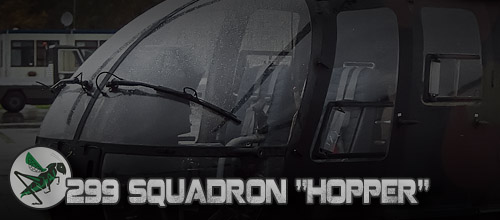
|
|
The no 299 Squadron “Hopper”
The Bo-105 Bölkow at Gilze-Rijen; Gilze-Rijen, November 1, 2000
The only unit in the Netherlands which is flying the Messerschmitt Bölkow Blöm Bo-105 Bölkow is the no 299 Squadron at Gilze-Rijen Air Base. The Bölkow is used for reconnaissance tasks and observation. The Dutch version of the Bölkow is unarmed. The Bölkow is deployed in areas where other helicopters cannot operate. Those who think nowadays at the name 299 Squadron, think at the Bo-105 Bölkow helicopters in the Royal Netherlands Air Force. The Bölkow was purchased in the Netherlands in 1974 to replace the Piper Super Cub.
|
|
|
|

|







